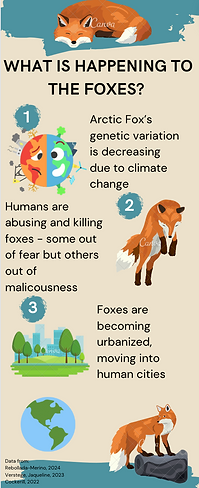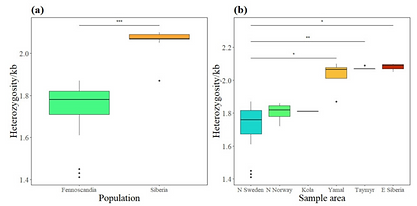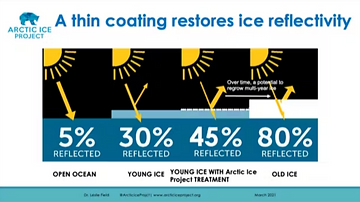Aanchal Patel

Writing Showcase
Scicomm Article
I wrote a Scicomm article to inform readers about foxes possibly having metacognition. Metacognition is the idea that the organism is aware of their own thought processes; this is considered to be a form of advanced thinking. In prior years, humans were the only animals said to have metacognition, and we have used that to distinguish ourselves from other animals. However, in recent years, research has shown that other animals (such as dolphins) display behaviors indicating that they also have metacognition. This research paper discusses the first (if not only) set of experiments studying fox behaviors and their potential metacognitive abilities.
Writing this Scicomm article taught me a lot about foxes (and animals in general) - I had no idea how smart animals could really be. It was interesting to read about the cognitive abilities of animals; I am a cognitive science major, so I felt this research article really spoke to me. I also learned about writing informally in terms of research; most research related assignments require formal language, so it was weird to try and write informally. I really liked it though, as the essay felt a bit more natural.
Click here to check out the article!
Advocacy Project
The Advocacy Project taught me a lot about the issues in the world, issues that I don't really take the time to learn about. This project asked us to learn and advocate for an issue related to your animal (in my case, the foxes). Although I knew that climate change was a leading issue, I learned about solutions that are actually possible. It was interesting to learn about the many solutions and technologies that have been recently developed to tackle these issues. Overall, I learned that advocating for an animal is not easy, but it does cause me to look at the issues of the world one step at a time.
A short promotional video giving some background on foxes and the dangers posed to them. Attached is my created infographic as well. Feel free to share both the video and the infographic to help spread awareness on these issues.

Why Foxes Matter
Human Injustices Towards Foxes
Aanchal Patel
WR60
Dr. Lynda Haas
5/26/24
Introduction
Foxes, with their sleek fur, bushy tails, and sharp eyes, have long captivated human imagination. Known for their cunningness and slyness, foxes are prominent figures in many cultural references, from folklore to modern media. This depiction is rooted in our own folklore and mythology, labeling foxes to be tricksters. For example, ancient Greek mythology spoke of a giant fox that could never be caught - emphasizing the cleverness of foxes. Additionally, Japanese stories spoke of fox spirits that were also shape-shifters - emphasizing their slyness. With the modern-age popular characters like Nick Wilde from “Zootopia” or the fox version of Robin Hood, these stereotypes have traveled through time. However, our current media portrayals are also an attest to how little the public actually knows about foxes.
Along with their incredible wit, foxes are adaptable and resourceful. Many fox species span the arctic tundra to urban landscapes, proving their tenacity and ability to thrive in most ecosystems. As predators and scavengers, foxes play an important role in their respective ecosystems. Recent research has even shifted to examine foxes’ cognitive abilities. Foxes have been tested for the detection of metacognition - the idea that we are aware of our own thought processes. While the study was inconclusive, it does highlight the intelligence foxes have to be adaptable and how their minds may be comparable to humans.

Japanese kitsune spirits were thought to be shapeshifters.
Define the problem
The facts are pretty clear that foxes can thrive in many situations. They are strong and resourceful creatures, capable of adapting to a variety of environments. It is no surprise that as an overall species, fox numbers are stable. Some subspecies, on the other hand, are in peril. Their numbers are declining, notably the Arctic Fox. According to the World Wide Fund for Nature (WWF), one of the biggest organizations in support of wildlife conservation, there are only around 120 Arctic foxes left in the Scandinavian area, which is a huge concern. But foxes are not at the root of their demise. Humans are knowingly - and unknowingly - the cause of their population decline.
A short video giving more information on the declining numbers of Arctic foxes and complications with red foxes

Foxes from Fennoscandia have a much lower heterozygous gene combination compared to other locations
Human Indirect Issues
As many of us have learned, our world is slowly becoming hotter. Global average temperatures are increasing every year, and we are sacrificing our wildlife for a swim at the beach. According to Jaqueline Verstege, global warming is causing a lot of the Arctic ice to melt. Yes, the same ice the arctic foxes live on. The Northern parts of the Arctic are melting, causing the Arctic foxes to move south. Or, some Arctic foxes are left on isolated lands, with a limited amount of resources. During the colder times of the year, Arctic foxes can travel on sea ice (ice bridges) formed when bodies of water freeze solid. This increases their area; Arctic foxes can hunt, forage and live in a wider range. Global warming is slowly putting a stop to the travel, as the sea ice duration has declined. This means that the sea ice bridges are not staying frozen for a long enough period if time for the foxes to cross, and/or some ice bridges are not forming anymore due to the increase in temperature. Arctic foxes are going into red fox territories, but are not able to compete. According to the Protect the Arctic Organization, red foxes are larger and more aggressive compared to Arctic foxes. Red foxes even take Arctic fox homes, and kills their young. This is even further reasoning as to why we need to step in and protect the Arctic foxes. They cannot even protect themselves. Plus, we are the reason for the increase in global temperatures - we lost the Arctic foxes their homes. Another researcher, named Christopher A. Cockerill, has collected the DNA of Arctic foxes in the Fennoscandian area over the course of a few decades to test for genetic variation. As reported in the data, "SNPs per 1 kb, was estimated to be on average 18.42% higher in the Siberian than northern Fennoscandian samples, 13.85% higher in the Siberian than in the northern Norwegian samples and 13.81% higher than in the Kola sample when separated.” To summarize, Fennoscandian arctic foxes have a much higher rate of inbreeding compared to Siberian arctic foxes (see graph to the left). Why may this cause problems? Inbreeding increases the chance of mutation for any organism. Because of our neglect, we are not only ruining our environment, but the wildlife inhabiting it.
Human Direct Issues
Climate change is a collective issue. I will admit, with me driving a gas car and using plastic, I too play a small indirect role in the big issue. However, there are some humans that directly harm wildlife - including foxes. Due to urbanization, foxes are forced to relocate. Faced with no other option, foxes are becoming our neighbors, feeding off of human trash and other small city animals. However, the stigma behind foxes is prevalent, with many people fearful of the creatures. Foxes are also popular prey for hunters. According to the Humane Society of the United States,”foxes have suffered from centuries of persecution by humans.” The article discusses other horrifying activities humans partake in that involve the harm of foxes; one of the most gut-wrenching activities is called, “fox penning,” where the poor captured foxes are placed into pens with packs of huge dogs. The organization even goes on to mention that some companies incorrectly label their furs as “faux,” forcing innocent consumers to fund the never ending harm towards foxes. In another research study led by Agustín Rebollada-Merino, the deaths of eight urban foxes in Madrid were recorded and investigated. As urban foxes are becoming more prevalent in our cities, it is important to consider how the general public - broader than hunters and clothing companies - views foxes. The study found that,”in 4 of the 10 cases, the cause of death was deemed unnatural.” Those deaths were found to be caused by blunt-force trauma (n=2), asphyxia as a result from hanging (n=1), and a firearm (n=1); all of these outcomes are indicative of the result of mankind, and did not seem necessary. Although the study did not investigate further into who was responsible for the deaths, it was indicative that the respective humans had a pure hatred for the animals; asphyxiation is an unnecessarily dissrespective death. Even more so, 2 out of the 10 recorded deaths were not able to be properly investigated, as their bodies were not properly preserved. Humans tend to put themselves first, and because of our selfishness, our wildlife is suffering.
Global Solution
As mentioned above, global warming is one of the most dire issues to tackle. While the Arctic foxes are suffering, solving global warming (the root of the issue) is the best way to shoot millions of birds with one stone. Arctic foxes will get their lands back, avoiding competing with the red foxes; while moving red foxes out of the area is a solution, the ice caps are still melting (only a temporary solution). Moving out the red foxes from the areas where the Arctic foxes now inhabit presents another problem - where would the red foxes go? what environments are good for their populations to thrive, and would them moving affect the food chain of another environment? If moving out the red foxes does not seem to be a good enough solution, what is?
Global warming will solve most of the animal issues - not only foxes - in the world.
However, we have known about global warming for a long time. We have known about this global threat for years. And there are multiple answers: recycling and energy conservation are only some of the solutions. All of these require laws to change - while they will be effective, people in power will have to be proactive. Additionally, these solutions are long-term, which is good, but does not tackle the issues head-on.
One small non profit had an innovative idea: cover the ice caps with reflective material. Because sunlight is the reason behind the melting ice caps - block the sun. This project is based in Silicon Valley - not too far from us. The Arctic Ice Project (@arcticiceproj) is a non-profit founded in 2007 that I found online. While this non-profit organization is very small, their goal is strong; there is so much research done on the reflective sand they have placed in the Arctic. According to their website, this reflective sand can delay the determination of the world by around 15 years. Their founder, Leslie Field, a Stanford Adjunct, wrote an article in 2021 providing evidence in support of the technology. The organization uses Hollow Glass Microspheres (HGMs), which is a type of silica-glass, and not harmful to any of the environment. I truly think that this idea can turn into something wonderful if awareness is spread. If you can, I highly recommend checking out the Arctic Ice Project’s website and social media, linked here and here.

Graphic from the Arctic Ice Project website showing the sands' efficacy.

Check out the Arctic Ice Project and see how you can contribute
Another solution
Another solution to save the foxes is to reduce the amount of hunters and/or increase the hunting restrictions placed. While hunting may have its benefits, some hunters love to kill endangered species. By restricting hunters on what animals they are allowed to kill, we can protect the animals. More specifically, by blocking the types of hunting imports allowed into the country, can help deter hunters from hunting. Many hunters love the awards that come from killing, and often take trophies to document their achievement. Animal carcasses or animal heads are trophies that are mounted on their walls. If imports were restricted, it could possibly deter hunters from even wanting to kill - as they would not be able to carry their trophy back.
However, there are protests against hunting regulations. Foxes prey on small animals, and often end up targeting poultry. Farmers and hunters believe that controlling the fox populations (aka killing them) is the most efficient way of solving the issue. In rebuttal to this idea, there was a case study done in 2000 by Baker and Macdonald which stated that most fox hunting was done recreationally, and not for pest control. This would put those farmers and hunters in the wrong - while foxes can be pests, they are unnecessarily shot.
“I have learned you are never too small to make a difference.”
-Greta Thunberg
Individualized Solution
One of the best social media campaigns that brought awareness to Global Warming was Greta Thunberg’s 2018, Fridays for Future campaign. This campaign led her to speak at the United Nations Climate Action Summit. Greta sat in front of the Swedish Parliament for days, causing her to gain social media attention. This grassroots movement ended with millions of the public eating less meat and going on less flights. Millions of people have learned about the dangers of climate change through her social media movement. Millions of people have learned about the many animals suffering because of climate change.
In my own experience protecting foxes, it was a unique experience to try and create a social media campaign. Learning how to use Twitter was a feat in itself - but finding profiles and evidence given the plethora of information was a challenge.
Individually, we can all work together to fix the issue. We can spread awareness on foxes using hashtags, and join the climate change battle. Together, we will help save the injustices placed upon foxes.
Citations:
“Arctic Ice Project.” https://www.arcticiceproject.org/. Accessed 2 June 2024.
Baker, Sandra E., and David W. MacDonald. “Foxes and foxhunting on farms in Wiltshire: a case study.” 6 January 2023, https://www.sciencedirect.com/science/article/abs/pii/S0743016799000510. Accessed 2 June 2024.
Cockerill , Christopher, et al. “Genomic Consequences of Fragmentation in the Endangered Fennoscandian Arctic Fox (Vulpes Lagopus).” PubMed, U.S. National Library of Medicine, 15 Nov. 2022, pubmed.ncbi.nlm.nih.gov/36421799/. Accessed 16 May 2024.
Fair, James. “Do we really need to control foxes in the UK?” DiscoverWildlife, BBC, https://www.discoverwildlife.com/people/do-we-really-need-to-control-foxes-in-the-uk. Accessed 2 June 2024.
Field, Leslie. “Restoring Arctic Ice: A New Way to Stabilize the Climate.” Arctic Circle, 9 March 2021, https://www.arcticcircle.org/journal/restoring-arctic-ice-a-new-way-to-stabilize-the-climate. Accessed 2 June 2024.
“Fridays For Future.” https://fridaysforfuture.org/. Accessed 2 June 2024.
Rebollada-Merino, Agustín et al. “Forensic findings in urban red fox mortality in the metropolitan area of Madrid, 2014-2022.” Journal of veterinary diagnostic investigation : official publication of the American Association of Veterinary Laboratory Diagnosticians, Inc, 10406387241239921. 2 Apr. 2024, doi:10.1177/10406387241239921
Verstege, Jaqueline, et al. “Arctic and Red Fox Population Responses to Climate and Cryosphere Changes at the Arctic’s Edge.” PubMed, U.S. National Library of Medicine, July 2023, pubmed.ncbi.nlm.nih.gov/37458813/. Accessed 16 May 2024.
